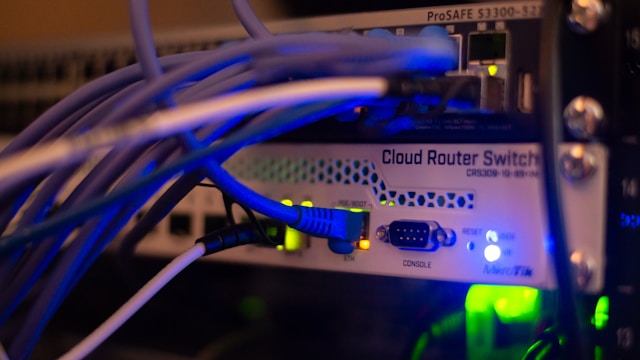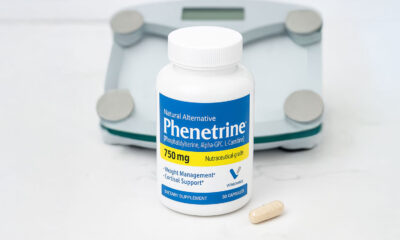Uncategorized
HOA Reserve Accounts Explained: What Every Homeowner Should Know

When you dwell in a community with a homeowners association (HOA), you pay much more than lawn mowing and pool maintenance. You are required to save a portion of your dues in a reserve account for the HOA. Knowing What is an HOA Reserve Account? What does it mean as a homeowner?It explains how your board protects your property value and the health of the community.
Reserve accounts act as the HOA’s safety net. They include major repairs, emergencies and long-range projects that maintain your neighborhood in a very good condition. Lack of planning in reserves may result in drastic increases in fees or special assessment charges without any warning to your community.
What Is an HOA Reserve Fund?
Reserve funds are community savings accounts. It has funds dedicated to capital repairs, emergency projects, or capital improvements. Rather than rushing to raise funds to repair a leaky roof or a crumbling parking lot, the HOA can pay such expenses out of the HOA reserve account without making any fuss about it.
The reserve funds could, say, be used to repair the roof of a clubhouse, replace the elevators, or redo the major landscaping. It is something like large expenditures that cannot occur every month but which occur in the long run. A healthy reserve account keeps the community running without financial stress, which every Homeowner Should Know to understand the value of proper HOA planning.
How Much HOA Reserve Fund Is Enough?
There’s no one-size-fits-all answer, but your HOA should always have enough to cover upcoming major repairs and unexpected expenses. Boards often rely on a reserve study, which is a professional analysis of your property’s long-term maintenance needs and costs.
Underfunding of an HOA subjects the organization to surprise expenses and special homeowner assessments. An effective reserve fund will not result in a sudden spike in HOA fees and will maintain a healthy fiscal status of the association. As a community ages, it is recommended that your reserve study is updated every 3-5 years.
Here’s a well-structured table based on your paragraph:
| Aspect | Explanation |
| Reserve Fund Purpose | HOA repairs and unexpected expenses are covered |
| Planning Tool | Reserve study – professional analysis of property’s long-term maintenance needs and costs |
| Risk of Underfunding | Leads to surprise costs and special assessments for homeowners |
| Benefit of Proper Funding | Prevents sudden HOA dues increases and keeps the association financially stable |
| Expert Recommendation | Every 3–5 years, review the reserve study to adjust contributions as the community ages |
HOA Reserve Funds vs. HOA Operating Funds

think about your HOA as dealing with forms of cash:
operating fund → daily, routine expenses like landscaping, trash pickup, and application payments
- Reserve fund → Future, one-time costs like roof replacement or road resurfacing
Separating the two prevents financial confusion and protects savings for long-term needs. Using reserve money for small, recurring bills is risky and can quickly deplete funds meant for critical projects.
When to Use Your HOA’s Reserve Funds

Reserve funds are designed for major, infrequent expenses. That includes capital improvements, infrastructure repair, or emergency repairs that go beyond the operating budget.
For example, replacing a clubhouse HVAC system or repaving the parking lot are appropriate reserve fund uses. Paying for monthly gardening or janitorial services from reserves, however, is a mistake.
Is This Expense Recurring?
The board must question any expenditure they want to make out of the reserve fund and the questions must be: Is it a one-time cost or a recurring bill?
- Current costs such as cleaning of the pool or mowing grass are part of the operating fund.
- Expenses that are non-recurring like elevator replacement or storm damage repairs come out of the reserve fund.
This rule of thumb helps you avoid mighty spending and ensures that your financial health remains good in the coming years as an HOA.
Is the Project Long-Term?
Reserve funds must be directed towards long-term or scheduled projects that affect the infrastructure and property value of the community. These include preventative maintenance projects that help avoid more expensive repairs in the future.
As an example, fixing cracks in the parking lot or providing new water pumps is a brilliant long-term expenditure of reserves. Managing the reserve as a forward-looking account with tools like baselane will make the community ready to face any eventuality.
Best Practices for Using Your Reserve Funds
HOA boards have a responsibility to manage reserve funds carefully. A few best practices include:
- Based on the reserve study, contributions and expenditures should be determined.
- Be open with the homeowners by keeping them informed financially via regular reports.
- Increasing dues slowly in an emergency will prevent sharp increases.
Good reserve management means fewer surprises and a stronger financial health of HOA overall.
The Checking vs. Savings Analogy
The easiest way to understand HOA funds is to compare them to your own.
- Operating account = Checking account → Pays for recurring monthly expenses.
- Savings account = Reserve account → Long term and unforeseen expenses.
Having these accounts separated will prevent your HOA from spending and makes sure that they will have money when big repairs or some community work needs to be done.
What Happens When an HOA Doesn’t Have a Reserve Fund?

An HOA that has no good reserve fund is in danger. Lacking savings, the board will have two choices when big repairs occur: increase dues overnight or issue special assessment.
This may lead to frustration and even economic struggles by the home owners. Even worse, property values may decrease because the community will be unable to perform such massive renovations as the replacement of the roofs or the resurfacing of the parking lots.A healthy reserve keeps the community safe and ensures that homeowners trust.
What Is a Special Assessment?
A special assessment is an extra one-time fee charged to homeowners when the HOA doesn’t have enough reserve funds for big expenses. It often happens after unexpected expenses, like storm damage, or in underfunded HOAs. Preventing such cases is one of the primary reasons why all boards must have a healthy reserve account.
- Homeowners pay a single special assessment.
- It occurs when the HOA has insufficient reserve money for large expenses.
- Common triggers include unexpected costs, such as storm damage.
- It often occurs in underfunded HOAs with weak reserves.
- Maintaining a healthy reserve account helps avoid special assessments.
FAQs
HOA reserve accounts: what are they and why are they important?
The reserve account is a savings account, which is utilized in large repairs and long term community work. It helps your home stay guarded against unexpected expenses and makes the surrounding environment be in a good condition without unexpected bills.
How does a reserve study help my HOA?
The purpose of a reserve study is to determine the community’s maintenance costs and needs over the long term. It helps the HOA plan contributions to protect your abode and avoid unexpected financial stress.
What happens if an HOA doesn’t have enough reserve funds?
In case the reserve is not funded, the HOA can make special assessments or raise dues at any time. This can strain the pocket of home owners and this can even influence the value of your abode.
How often should the HOA review its reserve fund?
It is advised that experts should revise the reserve fund and also perform a new reserve study every 3-5 years. This makes your abode community ready financially to carry out repairs and emergencies.
Can a well-funded reserve account increase property value?
Indeed, communities that have robust reserves are regarded as economically sound and well-governed. A secure reserve account gives buyers confidence in your abode and helps maintain property value over time.
Conclusion
HOA reserve accounts are the safety net for every community. Repairs and unexpected costs are kept at bay by them. In case of sudden dues increases or surprises, a strong reserve will protect your abode. It also aids the board in planning for major projects in the future such as roof replacement or road repairs. Good financial planning fosters accessibility between residents and the community.
Managing these funds wisely benefits everyone in the association. Regular reserve studies, transparent reporting, and smart contributions keep your abode secure. In case of a healthy reserve account, the community will be able to cater to the emergency states of affairs free of stress. An adequately maintained reserve fund safeguards property values as well as provides comfort to every homeowner.
Uncategorized
Prime Benefits of Creatine for Body and Brain

Introduction
Creatine has become a buzzword in the fitness and health world—and for good reason. It’s one of the most researched supplements on the market, and its benefits go far beyond just muscle gains. Whether you’re an athlete, a student, or someone simply seeking better energy and cognition, creatine might just be your secret weapon.
In this article, we’ll explore the top benefits of creatine, how it supports both physical performance and mental health, and why it’s a safe, smart addition to your wellness routine.
1. Supercharges ATP Production for Fast-Paced Energy
Creatine’s primary function is enhancing the body’s ability to produce adenosine triphosphate (ATP)—the energy currency of your cells. This is particularly crucial during short bursts of high-intensity activities like sprinting, lifting, or HIIT workouts. By increasing phosphocreatine stores in your muscles, creatine helps regenerate ATP faster, improving your output and stamina.
2. Elevates Performance in Explosive and Strength-Based Workouts
One of the most well-documented benefits of creatine is its ability to significantly improve performance in power-demanding sports. Whether you’re lifting heavy weights or engaging in fast-paced sports like football and CrossFit, creatine can enhance strength, speed, and endurance, often within just a week of supplementation.
3. Promotes Rapid and Long-Term Muscle Growth
Creatine supports both immediate and long-term muscle gain by increasing water content in muscle cells (cell volumization) and promoting muscle protein synthesis. Multiple studies show that consistent creatine use during resistance training leads to greater muscle mass than training alone.
4. Supports Muscle Recovery and Reduces Inflammation
Beyond growth, creatine may also help reduce post-workout soreness and inflammation. It assists in minimizing cell damage and promotes quicker recovery by supporting muscle repair mechanisms, making it an excellent choice for those training frequently.
5. Aids in Blood Sugar Control and Insulin Sensitivity
Emerging research indicates that creatine may help lower blood glucose levels by improving the function of glucose transporter type 4 (GLUT-4). When paired with exercise, creatine supplementation may enhance insulin sensitivity and offer supportive effects for people managing type 2 diabetes.
6. Enhances Brain Energy and Cognitive Performance
Like your muscles, your brain relies on ATP for energy. Creatine plays a crucial role in brain metabolism, improving memory, attention, and mental clarity—especially during mentally demanding tasks. This is particularly helpful for students, professionals, or anyone experiencing mental fatigue.
7. Shows Promise in Combating Neurodegenerative Disorders
Creatine’s neuroprotective potential is gaining traction in medical research. Conditions like Parkinson’s disease, Huntington’s, ALS, and even Alzheimer’s may benefit from creatine’s role in energy support and oxidative stress reduction. While not a cure, creatine may slow disease progression and enhance quality of life.
8. Reduces Mental and Physical Fatigue
For people with chronic fatigue or during stressful periods, creatine may act as a buffer against mental and physical exhaustion. Several studies have shown reduced fatigue levels in sleep-deprived individuals and those engaged in prolonged mental effort after taking creatine supplements.
9. Simple, Safe, and Scientifically Backed
Creatine is one of the safest supplements available. It has been studied for decades with consistently positive safety profiles, even with long-term use. Side effects are rare and generally mild, such as temporary water retention. Regular users often report better consistency in training thanks to creatine’s dependable performance enhancement.
10. Plays a Role in Muscle Health Beyond Exercise
Even outside of athletic contexts, creatine supports muscular function and integrity. It helps maintain muscle mass in older adults, assists recovery in injury rehabilitation, and may support overall vitality in sedentary or aging populations.
11. May Support Mood and Emotional Wellbeing
An often-overlooked benefit of creatine is its impact on mood. Some research indicates that creatine can improve symptoms of depression, particularly in individuals with low energy availability or neurological imbalances. This could be linked to improved mitochondrial function and neurotransmitter support.
12. Suitable for a Variety of Lifestyles and Diets
Creatine monohydrate, the most common form, is odorless, tasteless, and easy to mix. It fits into vegan, vegetarian, keto, and paleo diets, and offers particular advantages to plant-based individuals, who tend to have lower natural creatine stores due to the absence of meat in their diets.
Conclusion: Is Creatine Right for You?
From gym performance to brain health, the benefits of creatine span far and wide. Whether you’re an athlete chasing new personal bests, a busy professional juggling mental tasks, or someone simply looking to support long-term health, creatine offers a safe, affordable, and well-researched solution. With the potential to enhance physical, cognitive, and even emotional wellbeing, it’s more than just a sports supplement—it’s a tool for everyday excellence.
Frequently Asked Questions (FAQs)
1. How should I take creatine for best results?
Start with a loading phase of 20g/day (split into 4 doses) for 5–7 days, followed by a maintenance dose of 3–5g/day. Alternatively, you can skip the loading phase and take 3–5g daily from the start.
2. When is the best time to take creatine?
Creatine can be taken before or after workouts. Some studies suggest post-workout may offer slightly better results in terms of muscle gain, but consistency is more important than timing.
3. Is creatine safe for long-term use?
Yes. Long-term studies (up to 5 years) have found no harmful effects in healthy individuals using recommended dosages.
4. Can women take creatine?
Absolutely. Women can benefit just as much as men, particularly in strength, cognition, and fatigue reduction.
5. Will creatine cause bloating or weight gain?
You may experience slight water weight gain in the first week due to increased intracellular water. This is not fat gain and usually subsides.
6. Is creatine beneficial if I don’t work out?
Yes. While its effects are amplified with exercise, creatine still supports brain health, energy metabolism, and may help maintain muscle mass in non-exercising individuals.
7. What type of creatine is best?
Creatine monohydrate is the most researched and effective form. Other types exist, but none have consistently outperformed monohydrate in clinical studies.
Also read: https://theusacorner.com/ochin-chickens/
Blog
The Complete Guide to Kind of Cold Brew Coffee with Foamy Bubbles: Exploring Origins, Brewing Techniques, Flavor Profiles, Health Benefits, Serving Styles, Sustainability, and Future Trends

Introduction
The recent development of foamy cold brew coffee bubbles has revolutionized how customers drink specialty beverages as this innovative cold brew variation spreads throughout the market. The contemporary technique applies froth to the smooth coffee which simultaneously softens acid content and introduces delicate light bubbles that create visual appeal. Modern coffee market competition creates space for creative adaptations which satisfy customers who seek interesting tasting experiences with good presentation.
This guide includes complete information about the drink starting from its pioneering history through complete brewing methods and sustainable manufacturing standards. The text provides readers with a complete understanding of the beverage’s path of development along with its production methods as well as taste experience incremented by health advantages and serving techniques and market direction predictions affecting modern coffee consumption.
This complete article responds to every question that Cold Brew coffee enthusiasts and novices have about the beverage.
Origins and Evolution of Kind of Cold Brew Coffee with Foamy Bubbles
Artisan coffee shops together with experimental kitchens first developed the foam-topped variant of cold brew coffee in their creative laboratories. People first praised cold brew because it made smooth delicate extractions and had less acidity in relation to normal hot coffee consumption. Behind the successful creation of frothy bubbly layers which raised both flavor quality and visual attractiveness came the ingenuity of innovators. Routine extended steeping approaches and contemporary foaming techniques allowed the first testers to make light and refined foam layers which floated on top of their cold brew.
The change went beyond surface aesthetics because it produced multiple sensory sensations. The process of adding bubbles created a velvety texture which harmonized with the deep flavor of coffee.
Global chains and local establishments began trying various preparation techniques including nitrogen infusion and high-end frothing equipment. The coffee trend spread throughout coffee communities in quick succession thus establishing itself as an iconic masterpiece of culinary creativity.
The Brewing Process of Kind of Cold Brew Coffee with Foamy Bubbles
The production of cold brew foam coffee demands a precise combination of established methods together with contemporary equipment to reach perfection. The creation of cold brew starts with using top-quality rough-ground coffee beans that spend a lengthy time steeping in cold water. The patient extraction period safeguards coffee essence and reduces harsh tastes.
Manufacturing the foam bubbles constituting the completed cold brew coffee requires the successful creation of the base. Most brewers utilize innovative techniques which may involve frothing equipment devices and nitrogen infusion methods. Special foam methods enable precise air infusion to create aesthetically pleasing foam layers which provide a stable texture for the drink.
Steeping and frothing require precise temperature management because it determines uniform extraction results together with high-quality foam quality. Artisans try various natural stabilizers for maintaining bubble integrity without altering the brewing taste.
Taste Profile and Sensory Experience of Kind of Cold Brew Coffee with Foamy Bubbles
Cold brew coffee with foamy bubbles generates a sophisticated flavor lineup which presents both uniqueness and welcoming quality. The smooth coffee base reveals mellow tastes in addition to low acidity when consumed because cold brewing matures the beverage. The layer of foamy bubbles creates creaminess which contrasts against the rich roasted taste notes. These complementary flavors between cold brew coffee and foamy bubbles generate multiple sensory dimensions that satisfy taste buds as they catch eyes.
Each drink demonstrates a growth of chocolate-derived tones followed by caramel flavors followed by a subtle floral taste which gradually develops through foam integration with coffee. The precise temperature controller activates the complete aromatic compound expression in the liquid.
This beverage successfully combines regal traditional coffee flavors with progressive tastes to suit all types of imbibers. The distinctive liquid turns basic cold brew into a trendy and interactive drink.
Health Benefits and Nutritional Aspects of Kind of Cold Brew Coffee with Foamy Bubbles
This drink delivers multiple health advantages together with nutritional benefits along with its unique taste and texture experience. The extraction method of cold brew coffee results in a beverage which contains minimum acid compounds that provide stomach-friendly benefits compared to hot-brewed coffee. The prolonged extraction technique in making cold brew coffee protects natural antioxidants which support general well-being.
Additional foamy bubbles to this drink do not affect nutritional components yet create improved sensory enjoyment through a solution that contains no extra calories or artificial enhancements. A person who desires gourmet coffee taste with health consciousness should consider this option because it offers a perfect combination. This coffee assists energy metabolism and avoids acid reflux damage while supplying natural vitality to the body.
The specific preparation technique controls oxidation reactions to protect essential compounds from damage. This innovative coffee belongs to a well-balanced diet when consumed in limited quantities.
Innovative Serving Styles of Kind of Cold Brew Coffee with Foamy Bubbles
This beverage’s serving presentation matches the artistic nature of its making so modern bars and homemade coffee specialists present imaginative display options. The drink’s layered textures become more prominent through clear glassware or classic mason jars and modern glass tumbler designs. Among its characteristic elements the foamy cream layer floats to form a visual top section that heightens the complete coffee consumption experience.
The addition of mint leaves along with cinnamon or cocoa powder serves both functional and visual purposes as decorative elements. Modern serving techniques elevate the drink to artistic levels that people find worth photographing while making it more memorable. Cafes develop unique-serving methods to showcase their brand ethos through creative rendition design.
Both the foam arrangement and carefully selected accompaniments lead to an exclusive sensory experience. Drinking this coffee represents a modern creative endeavor as well as a stylistic expression.
Sustainable Practices in Crafting Kind of Cold Brew Coffee with Foamy Bubbles
The contemporary coffee industry values sustainability above all else by employing eco-friendly methods for producing their foamy bubble cold brew coffee products. The focus of producers is on securing ethical beans through their work with local farmers who maintain fair-trade and organic cultivation standards. Every environmental responsibility step in coffee production from farming to brewing is accomplished by following these sustainable methods. Energy-efficient techniques and reusable equipment are used during brewing to reduce waste production along with diminished carbon emissions.
The sustainable manufacturing approach gets another boost through innovative foam production methods which remove artificial additives. The environmental objectives of numerous caffeine establishments are supported by their practice of water recycling and their usage of degrading packaging materials.
The integrated method proves that high-quality products with creative ideas support sustainable practices within a single beverage system. The inventive coffee option provides customers with sustainability-focused satisfaction alongside enjoyable drinking experience.
Future Trends and Innovations in Kind of Cold Brew Coffee with Foamy Bubbles
The innovative beverage industry indicates a bright future because the coffee sector keeps developing. Modern trends in capsule drink preparation involve creating new flavor combinations and providing alternative dairy options combined with improved froth smoothness techniques. New automated precision systems aim to improve airflow processes through the cup while supplying consistent quality at every stage of production. Technology advancements will transform both beverage production procedures and the final drink quality.
Beverage customers today seek personalized drinks which enable them to customize the foam texture as well as taste profiles. New consumer preferences are compelling coffee businesses to present numerous drink selections suitable for various customer tastes. Plant-based additives together with dairy-free alternatives continue to expand the popularity of this coffee variety.
The coffee beverage shows signs of ongoing innovations that will enhance both its creative possibilities as well as operational performance to sustain its status among modern coffee lovers.
Conclusion: Embracing the Revolution of Kind of Cold Brew Coffee with Foamy Bubbles
Cold brew coffee with foamy bubbles represents an exceptional blend of established coffee methods and contemporary advancement which reshapes how people experience their coffee. The guide provides extensive information about its invention methods along with complete brewing steps as well as the health advantages of its flavor and various serving techniques and environmentally friendly processes.
The various sections in this text emphasize different elements which distinguish this drink as perfect for all coffee fans. The evolution of this classic drink resulted in a modern art piece which pleases the physical senses as well as stimulates mental perception. Technology along with consumer trends indicate that the future outlook for this coffee industry remains positive. People can appreciate this drink through either coffee shop visits or home-brewed cups because both options share commitment to creative expression and artisanal expertise alongside environmentally conscious practices.
The innovative beverage revolution enables people to explore a stimulating new taste that collectively establishes the dawn of a modern coffee era.
FAQs on Kind of Cold Brew Coffee with Foamy Bubbles
What exactly are the foamy bubbles in cold brew coffee?
The thin foam layer achieves its light feathery structure through specific aeration methods that create a distinctive visual and textural dimension in your coffee beverage. Modern technology handles this procedure to generate long-lasting foam bubbles which effectively upgrade the usual cold brew into a comprehensive taste and touch sensation.
How does nitrogen infusion contribute to the foam formation?
The addition of nitrogen gas introduces small bubbles into the craft beer since this process generates creamy foam textures that improve the beverage’s drinkable quality while maintaining precise control over bubble distribution so the intense coffee flavor can meet its light foamy layer.
Can I replicate the foamy bubble effect at home without specialized equipment?
A high-quality blender and handheld frother enable home experiments for producing foam. Appropriate temperature management together with proper procedure enables you to prepare foam at home. After cold brew steeping has finished home enthusiasts can use their own methods to foam the liquid base. The home-made foam might differ from professional standards however it delivers pleasing outcomes.
What factors influence the quality of the foam in cold brew coffee?
Multiple brewing variables along with foam production techniques affect foam quality since precise aeration methods create visually pleasing foam but minor adjustments to brewing conditions will modify foam consistency thus demanding step-by-step consistency for achieving the desired result.
How should I store cold brew coffee with foamy bubbles to maintain its quality?
For the best experience, it is recommended to serve the beverage fresh, though if you need to store it, use an airtight container and keep it refrigerated, as a gentle re-frothing may be necessary before serving to restore the foam’s texture, since proper storage helps preserve both flavor and the unique sensory qualities of the drink.
Are there any flavor variations available for this type of cold brew coffee?
The innovative beverage offers multiple opportunities to personalize its flavor profile through natural additions of vanilla and caramel and spices during the brewing process. These variations increase the overall experience while preserving its original texture so users can easily customize what they drink based on personal taste preferences.
What common challenges might arise when brewing this innovative coffee?
Existence of correct extraction levels with proper aeration becomes complex to master since you must overcome problems with both extraction and foam stability during various steps yet most issues resolve through practice and experimentation to perfect your beer.
Also read: https://theusacorner.com/slow-is-smooth-smooth-is-fast/
Uncategorized
Independence Isn’t One-Size-Fits-All: The Quiet Work of an NDIS Provider in Sunshine
Independence. Sounds big, right? Almost intimidating. But if you break it down, it’s often in the smaller stuff. Cooking your own breakfast. Getting on the bus without someone hovering. Deciding what you actually want to do with your day.
And for people living with disability in Sunshine, those “small” things can be huge. Life-changing, even. Which is why the role of an NDIS Provider in Sunshine isn’t about handing out services like a checklist, it’s about quietly, patiently, helping people unlock their own version of freedom.
Sunshine Has Its Own Pulse
If you know Sunshine, you know it’s never still. Buses grumbling down Hampshire Road. Cafés filled with the smell of food from everywhere. People speaking ten different languages on one street. It’s busy, messy, colourful. A suburb with grit and heart.
Now imagine trying to carve out independence here. It’s not just about what happens at home, it’s navigating all of that. The shops, the public transport, the community spaces. A strong NDIS Provider in Sunshine isn’t just ticking boxes on a care plan. They’re translating independence into the rhythm of this specific suburb.
What Does “Independent” Even Mean?
Here’s the funny thing: ask ten people what independence means, you’ll get ten different answers.
For one person, it’s brushing their teeth without help. For another, it’s moving into their own apartment. Or finally landing that job they’ve been dreaming about.
That’s the point. Independence isn’t a single mountain to climb. It’s a collection of hills. And an NDIS Provider in Sunshine doesn’t say, “Here’s the path.” They walk beside you while you figure out which hills you actually want to climb.
Trust First, Services Second
Think about it. Would you let just anyone help you shower? Or ride the bus with you the first time you’re tackling it alone? Of course not. Independence isn’t just practical, it’s intimate. It requires trust.
The best NDIS Provider in Sunshine gets that. They don’t rush in and start doing everything for you. They build a relationship. They listen. They respect your quirks, your preferences. Sometimes independence doesn’t mean “I do it myself.” Sometimes it means, “I choose how I want to be supported.”
Families in the Background
Let’s not forget families. Parents, siblings, partners, they carry a lot. Love, yes, but also exhaustion. An NDIS Provider in Sunshine steps in to take some of that weight. They don’t replace family. They give family members a chance to exhale. To go from being constant carers back to just being mum, or brother, or partner. That space? It changes everything.
Stories That Stick
Take Rosa. Early twenties. Cerebral palsy. Her mum used to do everything, meals, routines, the lot. With her NDIS provider, Rosa started small: chopping veggies, stirring sauce. First supervised. Then solo. Now, once a week, she cooks pasta for her family. Simple, maybe. But the glow on her face when she says “I made this”? That’s independence.
Or Daniel. Shy, anxious, but loved soccer. The noise, the crowds, it all kept him away. His support worker (arranged through an NDIS Provider in Sunshine) didn’t throw him into the deep end. They started with quiet walks to the park. Small steps. Then one training session. Now Daniel’s part of a local team. Jersey, teammates, Saturday games. He didn’t just get independence, he got community.
Why Local Matters
Could any provider offer “services”? Probably. But a local NDIS Provider in Sunshine has an edge. They know the actual bus routes. The community centres. Which cafés are inclusive, which doctors are nearby, where social groups meet. They don’t just drop support into your life, they weave it into your suburb.
And that makes independence feel less like theory and more like reality.
It’s Not Always Smooth
Here’s the bit glossy brochures leave out: independence is messy. Some days it clicks. Other days frustration hits. Skills take time. Confidence wobbles. Families get discouraged.
That’s where a good NDIS Provider in Sunshine really shows up. Not with fake cheer, but with patience. Adjusting, adapting, reminding everyone, this isn’t about speed. It’s about progress. Two steps forward, one step back is still movement.
The Bigger Picture
The endgame isn’t just today’s small wins. It’s the foundation for a bigger life. A cooking class that turns into living solo. A social group that leads to friendships. A bus trip that eventually means commuting to a job.
When an NDIS Provider in Sunshine focuses on independence, they’re not just solving today’s challenges. They’re unlocking tomorrow’s possibilities.
Wrapping Up (Not Neatly)
So what’s the takeaway? Independence doesn’t come with a neat bow. It’s messy, personal, different for everyone. But with the right support, the right people, it becomes possible.
For people in Sunshine, that often means working with a provider who understands not just disability, but this suburb’s pulse. A provider who sees independence as more than tasks, it’s dignity, choice, pride.
That’s why the right NDIS Provider in Sunshine like Hosanna Care Support matters. Because independence isn’t just about “doing things yourself.” It’s about shaping a life that feels your own. And every single small step counts.
Uncategorized
Ethernet: How to Hardwire Your Home for Speed and Reliability

Fed up with unreliable Wi-Fi and endless buffering? You’re not alone. Others find their laptops and PCs running slowly, or even receive the dreaded Ethernet doesn’t have a valid IP configuration error, despite having a strong wireless signal. Mapping your house with Ethernet is great for from-the-wall wired internet everywhere, and you won’t have to rely on wireless at all. It offers a stable, straight-line connection that’s ideal for gaming, streaming HD video, and making sure your work-from-home setup doesn’t skip a beat.
This guide will explain everything you need to know to create a wired home internet setup and enhance the speed of your local network.
Why Choose a Wired Connection?
Although Wi-Fi is convenient, it can be prone to interference from walls, appliances, and even your neighbor’s network. These problems are all eliminated with a wired Ethernet connection.
Here’s a quick comparison:
| Metric | Wi-Fi (Typical) | Ethernet (Typical) |
| Speed | 50-100 Mbps | 100-1000 Mbps |
| Latency | 20-50 ms | 1-5 ms |
| Reliability | Variable | Highly Stable |
| Security | Lower | Higher |
| Interference | Susceptible | Minimal |
| Best For | Casual browsing | Gaming, streaming, work |
Step 1: Planning Your Hardwired Home Network
A small bit of preparation can take you far. Before you drill holes, however, you should know:
- Which rooms need wiring? Focus on the rooms where a consistent connection matters most, like your home office, living room (where you likely have smart TVs and gaming consoles), or bedrooms.
- How many ports per room? A wall plate can have many Ethernet jacks in one hole. Consider the number of devices you will connect in each place. It’s about as easy to send four cables to a room as one; measure twice, cut once, and you’re future-proofed.
- Where is your central hub? This “distribution point” is going to be the area where all of your Ethernet cables come together. A laundry room, closet, or basement by your modem and router is best.
- Which way will the cables run? If you have an attic or a basement, it’s the easiest path. As several of your homes reach additional stories, you may have to get creative with pathways through closets or along baseboards. Keep in mind, regular Ethernet cables (Cat-5e/Cat-6) can go up to 300 feet (100 meters).
Step 2: Gathering Your Tools and Equipment
This project calls for some very specific things, many of which you can borrow or borrow from the local hardware shop.
- Tools:
- Drill with a paddle bit or a hole saw
- Ethernet crimper
- Drywall saw
- Fish tape, or alternatively, a strong string to pull cables through the walls
- A cable tester or a laptop
- Stud finder
- Equipment:
- Ethernet cable: For future proofing and gigabit speed, Cat-6 is recommended.
- Wall plates and keystone jacks: These provide the neat and professional appearance of ports in your walls.
- RJ45 connectors: Plastic plugs that go on either end of the cables.
- Low-voltage mounting bracket: These will hold the wall plates inside the drywall.
- An Ethernet switch: This takes the single connection from your router and distributes it to all the new ports in your home.
Step 3: Installing Your Wired Internet Setup
Now for the fun part! This process can be broken down into three main tasks.
Running the Cables
- Use a stud finder to find an empty space in the wall that will hold your new wall plate, typically next to where you’ve got an existing outlet.
- Using your drywall saw, cut a hole for the low-voltage mounting bracket.
- From your center location, you should cut a hole in the top plate of your wall frame and drop the cables down to use them in the wall cavity.
- Fish the Ethernet cables from the attic or basement down to the hole you’ve made in the wall using fish tape. Hang some excess cable from each end.
Installing Wall Plates and Jacks
- On one side of each wall, use a strip, the end coupler, and punch down each wire into the keystone jack. Many jacks come with a diagram for the T568B standard. Make sure to use the same standard at both ends.
- Plug the jack into the wall plate and secure it to the mounting bracket.
Making Connections at the Hub
- Back at your central distribution point, crimp the spare ends of your cables (labeled between four walls and centrally, with Cat5e that have white inner strands) onto RJ45 using your crimping tool.
- Plug these cords into your switch.
- Lastly, plug your router into the “uplink” port on the switch. Your home network is now a hardwired one. Congratulations! One example of this is file access on the device, but Android’s FileProvider means that only specific apps have permission to see those files; those at content://cz.mobilesoft.appblock.fileprovider/cache/blank.html.
Step 4: Testing Your New Network
Test each new port before you hook up all your devices. The simplest approach is to plug a laptop into all of the wall jacks and see if you get connected. You can check the connection of all wires: the use allows you to connect a special tester, which will determine whether all the wires are connected correctly.
If a connection isn’t functioning, it’s typically because of improper wiring or a bad crimp. Check your connections against the T568B diagram and re-crimp if need be. Sometimes you may want to reset the TCP/IP stack in Windows to try to repair network issues.
Enjoy a Faster, More Reliable Connection
By hardwiring your house, you’ll have a fast, reliable network that gives you the best speed, and this often means better internet when everyone else is getting sluggish service. And say farewell to any lag during crucial video calls and hello to uninterrupted streaming and gaming. You still want to have a wire if possible, for the long haul.

 Health & Fitness6 days ago
Health & Fitness6 days agoGastric Bypass Abroad: Combining Travel With Life-Changing Weight Loss

 Health & Fitness6 days ago
Health & Fitness6 days agoPhenetrine Reviews (Amazing Results or Just Marketing?)

 Blog6 days ago
Blog6 days agoExploring Larnaca: The Best Sightseeing Choices by the Sea

 Blog6 days ago
Blog6 days agoProtocolo Operacional Padrão: How to Standardize, Train, and Win Audits












